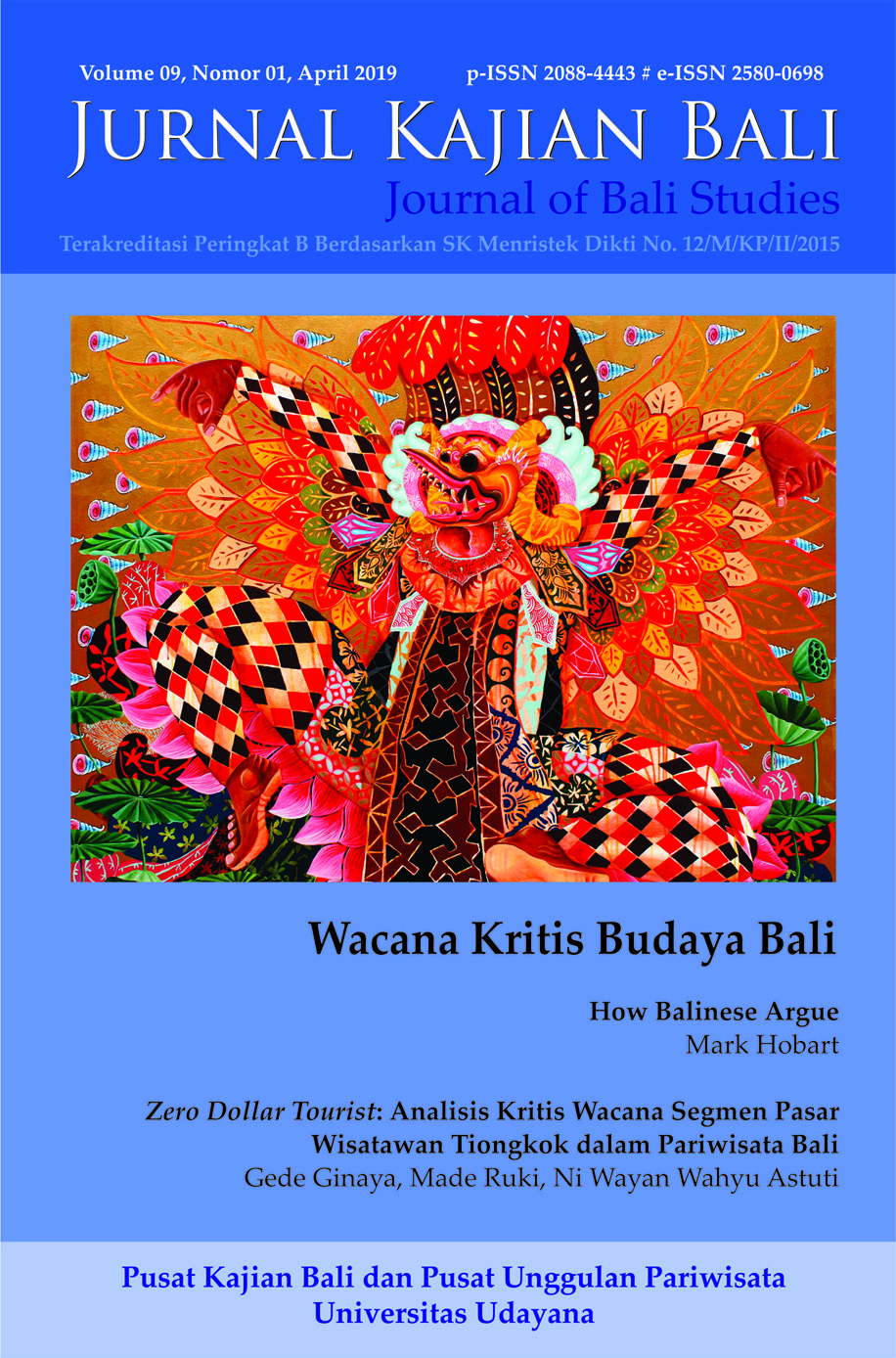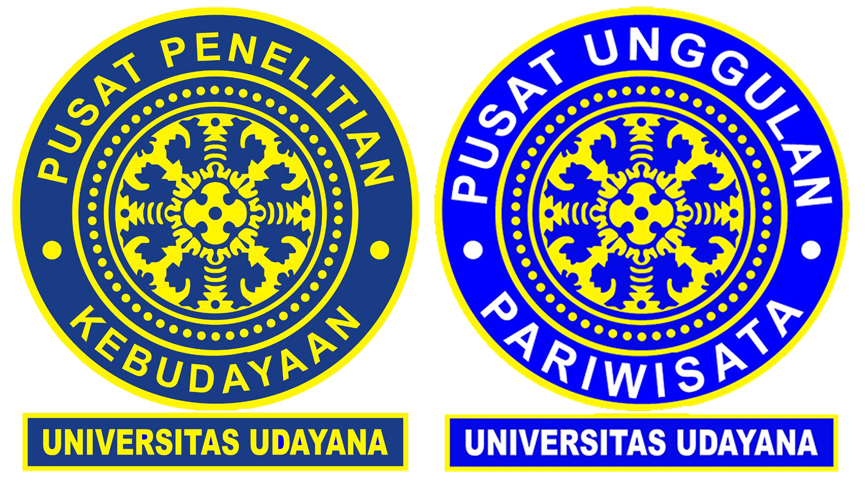Keragaman Tanaman Obat dalam Lontar “Taru Pramana” dan Pemanfaatannya untuk Pengobatan Tradisional Bali
Abstract
“Taru Pramana” lontar manuscripts contain medicinal plant diversity and it uses for traditional system of Balinese medicine. This study aims to describe medicinal plant diversity in “Taru Pramana” lontar manuscripts and its use for traditional system of Balinese medicine. This research uses the library method. The unit of analysis is the “Taru Pramana” lontar manuscript from collection of the Leiden University Library, Netherlands. The data obtained were analyzed descriptively. The ethnosystem approach is used as the main approach in this analysis, which places an emic perspective on the relationship between humans and plants. A total of 182 plant species are used in traditional Balinese medicine, mostly including family members of euphorbiaceae, moraceae, fabaceae, and zingiberaceae. The parts used were leaves, shoots, stem bark, roots, fruit, sap, tuber and used them into various forms of medicine such as loloh, boreh, sembar, tutuh, tempel, and ses. The practice of the use of medicinal plants in traditional Balinese medicine is based on a strong belief and knowledge system.
Downloads
References
Adiputra, N., Aman, I.G.M., Manuaba, I.B.P. 2017. The toxicity of antiviral plants used in Balinese traditional medicine. Bali Medical Journal 6 (2):243-246. DOI:10.15562/bmj.v6i2.537.
Agung, A. A. G. 2005. Bali Endangered Paradise? Tri Hita Karana and the Conservation of the Island's Biocultural Diversity. PhD Thesis. Leiden: Universiteit Leiden.
Barrera-Bassols, N., Toledo. V.M. 2005. Ethnoecology of the Yucatec Maya: Symbolism, Knowledge and Management of Natural Resources. Journal of Latin American Geography 4 (1): 9-41.
Barrera-Bassols, N., Zinck, J.A., Ranst, E.V. 2006. Symbolism. Knowlegde and Management of Soil and Land Resources in Indigenous Communities: Etnhopedology at Global, Regoinal and Local Scales. Catena 65: 118-137. http://dx.doi.org/doi:10.1016/j.catena.2005.11.001.
Bijeker, S. dan Gayatri, M.C. 2014. Etnomedicinal Properties of Euphorbiaceae Family: A Comprehensive Review. International Journal of Phytomedicine 6 (2): 144-156.
Caneva, G., Traversetti, L., Sujarwo, W., Zuccarello, V. 2017. Sharing Ethnobotanical Knowledge in Traditional Villages: Evidence of Food and Nutraceutical B Core Groups in Bali, Indonesia. Economic Botany. 71 (4):303–313.
Clement, W.L dan Weiblen, G.D. 2009. Morphological Evolution in the Mulberry Family (Moraceae). Systematic Botany 34 (3): 530–552.
Danarto, S.A. 2013. Keragaman dan Potensi Koleksi Polong-Polongan (Fabaceae) di Kebun Raya Purwodadi – LIPI. Seminar Nasional X pendidikan Biologi FKIP UNS.
Hanski, I. 1998. Metapopulation Dynamics. NATURE 396 (5): 41-49.
Leurs, L.N. 2009. Medicinal, Aromatic and Cosmetic (MAC) Plants for Community Health and Bio-Cultural Diversity Conservation in Bali, Indonesia. PhD Thesis. Leiden: Universiteit Leiden.
Sujarwo, W. dan Caneva, G. 2016. Using Quantitaive indeces to evaluate the cultural importance of food and nutraceutical plants: Comparative data froam the island of Bali (Indonesia). Journal of Cultural Heritage 18 (2016):342-348 http://dx.doi.org/10/1016/j/culher.2015.06.006.
Sujarwo, W. dan Keim, A.P. 2017. Ethnobotanical Study of Traditional Building Materials from the Island of Bali, Indonesia. Economic Botany. 71(3): 224–240.
Sujarwo, W., Arinasa, I.B.K., Salomone, F., Caneva, G., Fattorini, S. 2014. Cultural Erosion of Balinese Indigenous Knowledge of Food and Nutraceutical Plants. Economic Botany. 68(4):426–437.
Sujarwo, W., Keim, A.P., Savo, V., Guarrera, P.M., Caneva, G. 2015. Ethnobotanical study of Loloh: Traditional herbal drinks from Bali (Indonesia). Journal of Ethnopharmacology. 169 (2015): 34-48. http://dx.doi.org/10.1016/j.jep.2015.03.079.
Sujarwo, W., Keimb, A.P., Canevae,G., Tonia, C., Nicoletti, M. 2016. Etnobotanical uses of neem (Acadiractha indica A. Juss.; Meliaceae) Leaves in Bali (Indonesia) and The Indian Subcontinent in Relation with Historical Background and Phytochemical Properties. Journal of Etnopharmacology. 189 (2016):186-193. http://dx.doi.org/10/1016/j.jep.2016.05.014.
Ventegodt, S., Thegler, Z., Andreasen, T., Struve, F., Jacobsen, S., Torp, M., Ægedius, H., Enevoldsen, L., Merrick, J. 2007. A Review and Integrative Analysis of Ancient Holistic Character Medicine Systems. The Scientific World JOURNAL. (2007) 7: 1821–1831. DOI 10.1100/tsw.2007.282.
Watanabe, K., Matsuura, K., Gao, P., Hottenbacher, L., Tokunaga, H., Nishimura, K., Imazu, Y., Reissenweber, H., Witt, C.M. 2010. Traditional Japanese Kampo Medicine: Clinical Research between Modernity and Traditional Medicine: The State of Research and Methodological Suggestions for the Future. Evidence-Based Complementary and Alternative Medicine. doi:10.1093/ecam/neq067.
World Health Organization. 2010. Benchmarks for Training in Unani Medicine.
_________ . 2013.Traditional Medicine Strategy: 2014-2023.
Yakubo, S., Ito, M., Ueda, Y., Okamoto, H., Kimura, Y., Amano, Y., Togo, T., Adachi, H., Mitsuma,T., Watanabe, K. 2014. Pattern Classification in Kampo Medicine. Evidence-Based Complementary and Alternative Medicine. http://dx.doi.org/10.1155/2014/535146.
Yuan, H., Ma, Q., Ye, L., Piao, G. 2016. The Traditional Medicine and Modern Medicine from Natural Products. Molecules 21 (559): 1-18. doi:10.3390/molecules21050559.
Zerega, N.J.C., Supardi, M.N.N., Motley, T.J. 2010. Phylogeny and Recircumscription of Artocarpeae (Moraceae) with a Focus on Artocarpus. Systematic Botany 35(4): 766–782. DOI 10.1600/036364410X539853.
Zerega, N.J.C., Clement, W.L., Datwayler, S.L., Weiblen, G.D. 2005. Biogeography and Divergence Times in the Mulberry Family (Moraceae). Molecular Phylogenetic and Evolution 37 (2005): 402-416. doi:10.1016/j.ympev.2005.07.004.

This work is licensed under a Creative Commons Attribution 4.0 International License.



















